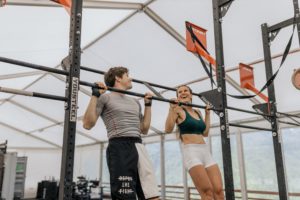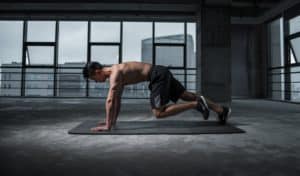
INTRO
What are lunges?

Lunges are a type of exercise that involve stepping forward or backward and lowering your body by bending your knees, either without weight or while holding dumbbells or a barbell.
Lunges are a compound exercise, meaning they work multiple muscle groups at the same time, including the quads, glutes, and hamstrings. Lunges are often included in strength training and muscle-building workouts, as they can help increase muscle size, strength, and power.
Starting a lunge challenge and inviting your friends to join is a great way to stay consistent and feel supported in your challenge.
Benefits of Lunges
It’s important to note that the benefits of lunges may vary depending on factors such as age, fitness level, and overall health and it’s always a good idea to speak with a healthcare professional before starting a new exercise program.
Lunges offer a number of health benefits, including:
Increased muscle size and strength
Lunges are an effective exercise for building muscle size and strength in the legs, glutes, and lower back.
Improved mobility and flexibility
Lunges can help improve flexibility and mobility in the hips, ankles, and knees.
Increased bone density
Lunges can help increase bone density in the legs and spine, which can help prevent osteoporosis and reduce the risk of fractures.
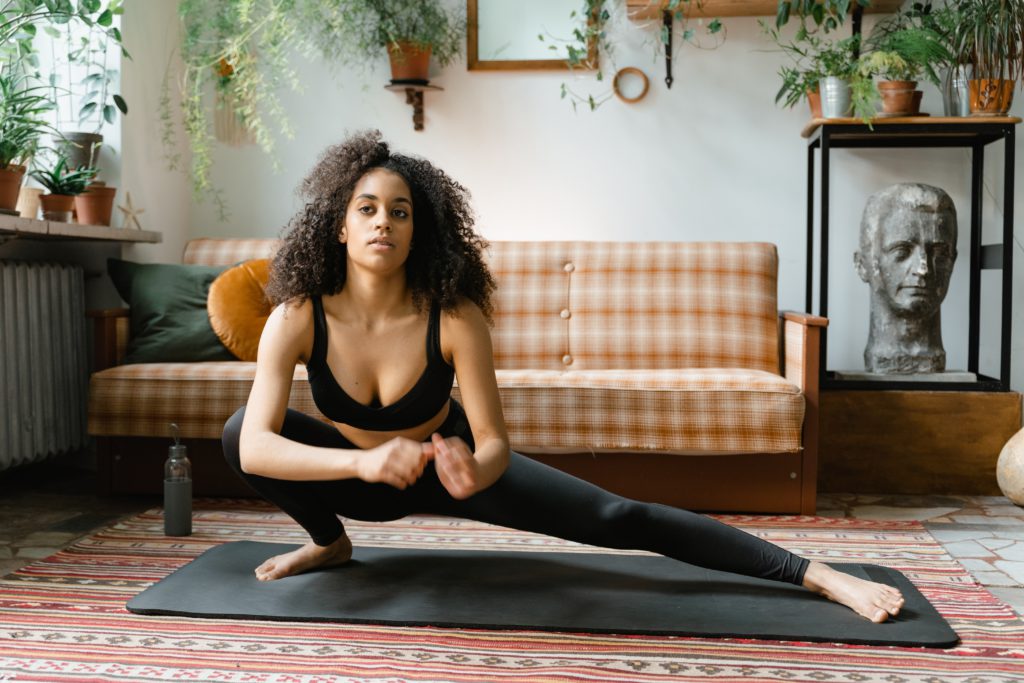
Weight management
Lunges can help increase metabolism and burn calories, which can support weight management efforts.
How to do Lunges?

When practicing lunges, it’s important to keep a few key actions in mind to avoid strain and overuse, and optimize your gains. These include:
Proper form. Proper form is crucial for getting the most benefit from lunges and avoiding injury. Make sure to keep your chest up, your back straight, and your core engaged as you step and lower your body.
Gradual progression. It’s important to gradually increase the difficulty of your lunges as you get stronger. This can be done by increasing the weight you’re lifting, the number of reps you’re doing, or the length of your sets.
Variety. Mixing up your lunge routine can help prevent boredom and keep your workouts interesting. Try incorporating different variations of lunges, such as forward lunges, reverse lunges, or lateral lunges, into your routine.
Warm-up. Make sure to warm up properly before doing lunges to help prevent injury. This can include dynamic stretches and light cardio to get your muscles and joints warmed up.
Cool-down. It’s also important to cool down after your lunges by stretching your muscles and taking some time to recover. This can help reduce muscle soreness and improve your overall recovery.
Consistency. Building strength and proficiency with lunges takes time and consistent practice. Make sure to practice regularly and be patient with yourself.
Types of Lunges
There are many different variations of lunges that target different muscle groups, and it’s important to choose the right type of lunge for your fitness level and goals, and to use proper form to avoid injury and get the most benefit from the exercise.
Some lunge variations including:
Forward lunges
Forward lunges involve stepping forward and lowering your body by bending your legs.
Side lunges
Side lunges involve stepping to the side and lowering your body as you bend your legs.
Weighted lunges
Lunges can be made more challenging by holding dumbbells or a barbell as you lunge.
Jumping lunges
Jumping lunges involve jumping from the lunge position into another lunge with the opposite leg. These are slightly more advanced.
Curtsy lunges
Curtsy lunges involve crossing one leg behind the other as you lunge.
Reverse lunges
Reverse lunges involve stepping backward and lowering your body by bending your legs.
Side lunges with dumbbells
Weighted side lunges add an extra challenge as you hold a dumbbell with both hands to the side and lowering your body by bending your legs.
Elevated reverse lunge
Starting from an elevated position, step one foot back onto the floor and lower the body until the back knee almost touches the floor. Push back up into the elevated position and repeat with the other leg.
How to Start a Lunge Challenge
Here are some tips to help you get started with your lunge challenge and maintain the habit:
1
Set a goal
Determine how many lunges you want to be able to do and work towards that goal.
2
Make a plan
Decide on a schedule for practicing lunges and stick to it. You could aim to practice a few days a week, or even every day.
3
Track your progress
Keep a record of how many lunges you can do and how you feel after each workout. This will help you see your progress and stay motivated.
4
Lunge with friends
Invite friends to join your lunge challenge and keep each other accountable and motivated to stick to your lunge routine.
5
Mix it up
Don’t be afraid to try different variations of lunges, like forward lunges, reverse lunges, or lateral lunges, to keep your workouts interesting and challenging.
6
Be consistent
The key to building any habit is consistency. Make sure to practice regularly and be patient – it can take time to see progress.
7
Get support
If you’re struggling to stay motivated or make progress, consider working with a personal trainer or joining a group fitness class that focuses on lunges. Having someone monitor your physical form as you practice can make a big difference.
Lunging Past Setbacks

There may be days in your lunge challenge where you feel discouraged or unmotivated. This is totally normal! Here are some tips to help you overcome common setbacks when starting your lunge challenge:
Use proper form. Make sure you’re using proper form when doing lunges to avoid injury and get the most benefit from the exercise. If you’re not sure about your form, consider working with a personal trainer or checking out online resources for guidance.
Gradually increase the difficulty. If you’re struggling to complete a certain number of reps or sets, try gradually increasing the difficulty of your lunges by adding weight, doing more reps, or increasing the length of your sets.
Incorporate other lower body exercises. In addition to lunges, try incorporating other complimentary exercises into your routine to build strength and support your lunge practice, like squats, sit ups, or burpees.
Add rest days when needed. It’s important to listen to your body and take breaks when needed to prevent burnout or injury. If you’re feeling sore or fatigued, it’s okay to take a rest day and come back to your lunges when you’re feeling rested and recovered.
Seek support. If you’re struggling to stay motivated or make progress, consider working with a personal trainer or joining a group fitness class that focuses on lunges. Having someone to support and guide you can make a huge difference in your gains.
Be patient. Building strength and proficiency with lunges takes time and consistent practice. Like any other habit you’re trying to create, it’s important to be patient with yourself and you’ll begin to notice improvements in your strength and ability to practice lunges.
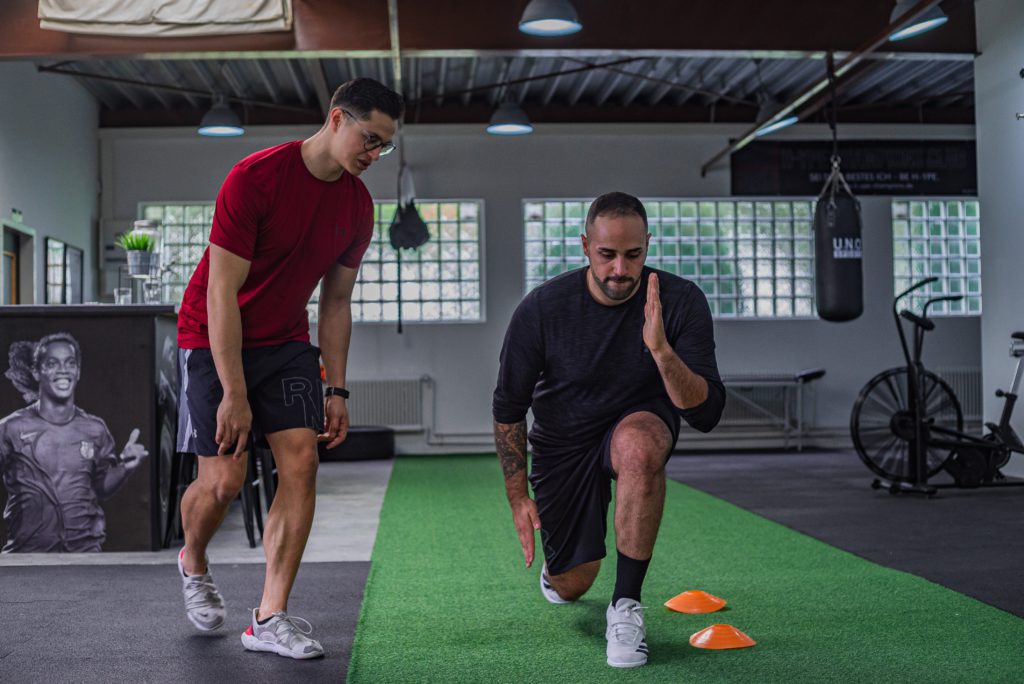
Level-Up Your Lunges
There are several online and in-person resources that can support your lunging practice, including:
Personal trainers. Working with a personal trainer can provide personalized guidance and support to help you build your lunge practice.
Group fitness classes. Joining a group fitness class that focuses on lunges can provide a supportive and motivating environment to help you stay on track with your practice.
Workout buddies. Having a workout buddy or a few to practice with can help you stay accountable and motivated to stick to your lunge practice routine. Invite your friends and neighbors to join your lunge challenge!
Online resources. There are many online resources available, like the MasterHealth app, which can provide guidance and support while you build your lunge practice.
Exercise equipment. Using exercise equipment, such as weights or resistance bands, can help you progressively increase the difficulty of your lunges as you get stronger.
Apps and tracking tools. There are many fitness apps and tracking tools (also available in the MasterHealth app) that can help you track your progress and stay motivated as you build your lunge practice.
Lunge Equipment
Here are a few examples of products that can be added to your home gym to support lunges
Weights
Weights such as dumbbells and kettlebells, can be used to add resistance to your lunges and help you build strength.
Lifting straps
Lifting straps are a type of equipment that can be worn around the wrists and used to hold onto weights during lunges.
Resistance bands
Resistance bands can be used to provide additional resistance and challenge your muscles during lunges.
Weightlifting shoes
Weightlifting shoes are a type of footwear specifically designed for weightlifting activities, including lunges. They typically have a flat, stable sole and a raised heel to help improve your form and stability.
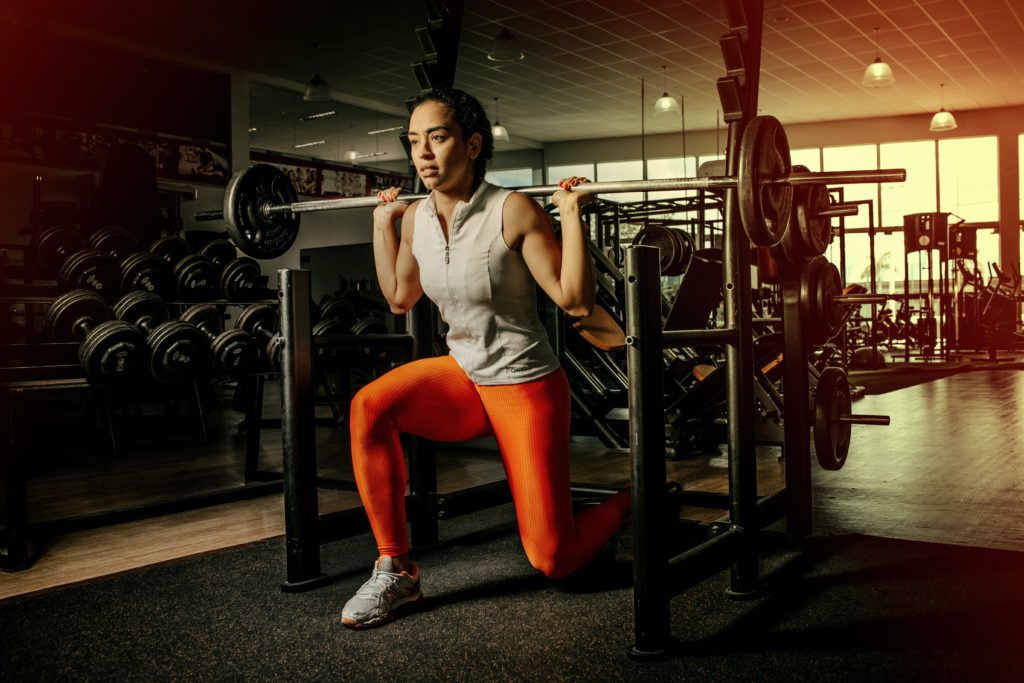
Specialized apparel
Specialized apparel, such as weightlifting belts, knee sleeves, leggings, and compression socks, can help support and protect your body during lunges.
Lunge FAQ's
Lunges are a great exercise for strengthening and toning the lower body, particularly the muscles in the legs and buttocks. Here are the primary muscles that lunges work:
Quadriceps. The quadriceps are the muscles at the front of the thigh. They are responsible for extending the knee joint (straightening the leg) and are the primary muscles used during the upward movement of the lunge.
Glutes. The glutes, or the muscles of the buttocks, are responsible for hip extension and are heavily activated during the downward movement of the lunge.
Hamstrings. The hamstrings are located at the back of the thigh and are responsible for bending the knee and extending your leg behind you. Hamstrings are also activated during the downward movement of the lunge.
Calves. The calf muscles are located at the back of the lower leg and are responsible for ankle flexion. They are also activated during the upward movement of the lunge.
In addition to these primary muscle groups, lunges also engage the core muscles, including the abs and the lower back muscles, which help to stabilize the body during the exercise.
There are several possible reasons why lunges may be causing knee pain:
Incorrect form. Lunges require proper alignment of the knees, hips, and ankles. If your form is incorrect, your knees may be under too much stress, leading to pain. Make sure your knee is tracking in line with your toes and not collapsing inward or outward.
Weak muscles. Weak muscles around the knee joint can lead to poor knee stability and alignment during lunges, which can result in knee pain. Strengthening the muscles around the knee, such as the quadriceps and glutes, can help improve knee stability and reduce pain.
Overuse. If you are doing too many lunges too quickly or too frequently, your knees may become overused, leading to pain. Make sure to allow enough rest time between lunges and gradually increase the number of repetitions or sets.
Previous injuries. If you have a history of knee injuries, such as ligament tears or meniscus injuries, lunges may exacerbate the pain. It’s important to consult a healthcare professional before doing lunges if you have a history of knee injuries.
If you are experiencing knee pain during lunges, it’s important to stop and rest. Consult a healthcare professional if the pain persists or worsens and seek guidance from a coach to correct your form.
Reverse lunges primarily target the following muscles:
Glutes (Buttocks muscles). The glutes are heavily engaged during the downward movement of the reverse lunge. They are responsible for hip extension and play a crucial role in stabilizing the body during the exercise.
Hamstrings. The hamstrings are located at the back of the thigh and are responsible for bending the knee and extending your leg behind you. Hamstrings are also activated during the downward movement of the lunge.
Quadriceps. The quadriceps are the muscles at the front of the thigh. They are responsible for straightening the leg and are the primary muscles used when lifting out of the reverse lunge.
Calves. The calf muscles are located at the back of the lower leg and are responsible for ankle flexion. They are also activated during the upward movement of the reverse lunge.
Side lunges, also known as lateral lunges, primarily target the following muscles:
Glutes. The glutes are heavily engaged during the lateral movement of the side lunge and are responsible for lifting your leg behind you and play a crucial role in stabilizing the body during the exercise.
Adductors. The adductors, which are located on the inner thigh, are responsible for hip adduction (bringing the thigh towards the midline of the body) and are heavily activated during the lateral movement of the side lunge.
Quadriceps. The quadriceps are the muscles at the front of the thigh, responsible for straightening the leg and are activated during the upward movement of the side lunge.
Hamstrings. The hamstrings are located at the back of the thigh and are responsible for bending the knee and extending your leg behind you. Hamstrings are also activated during





